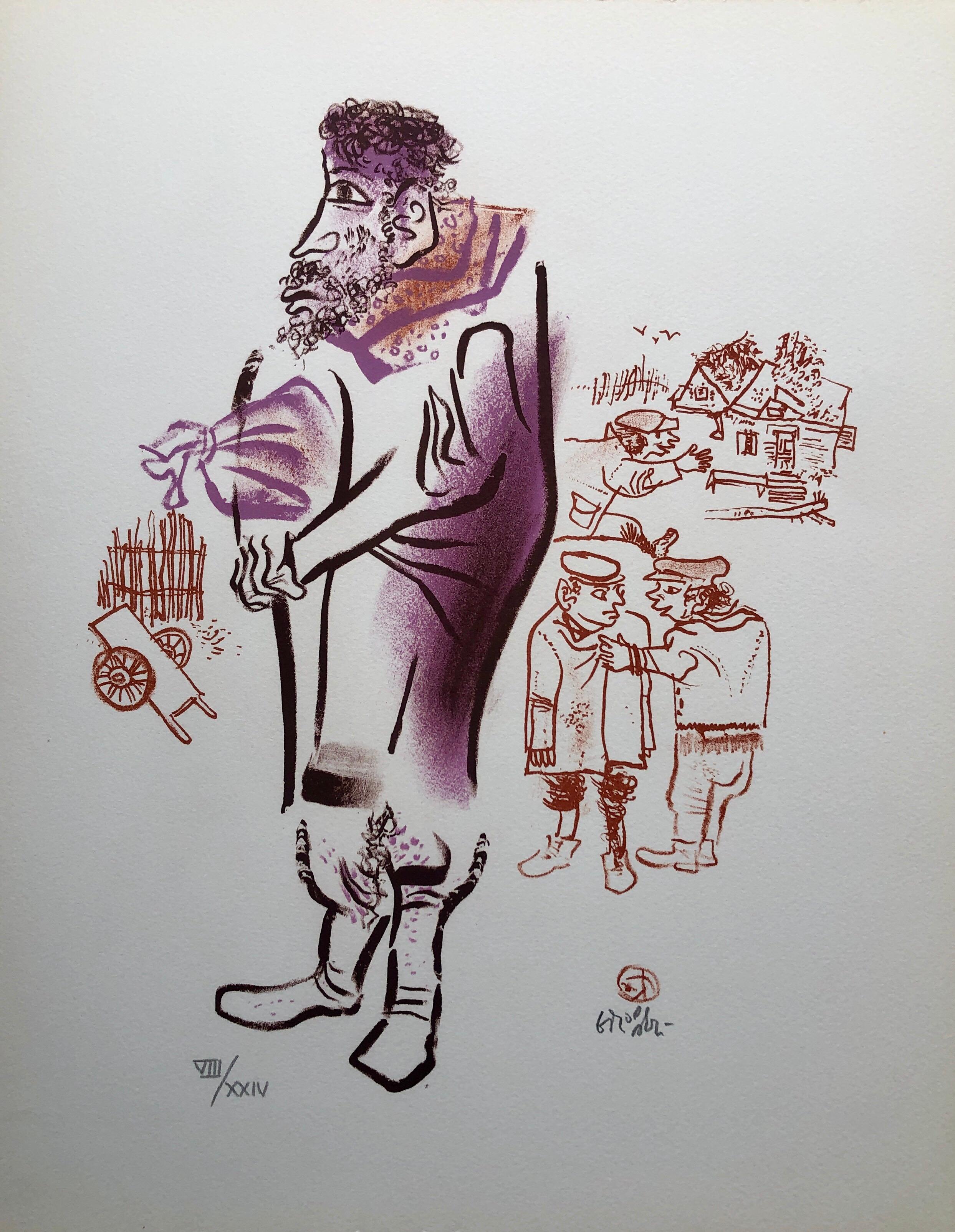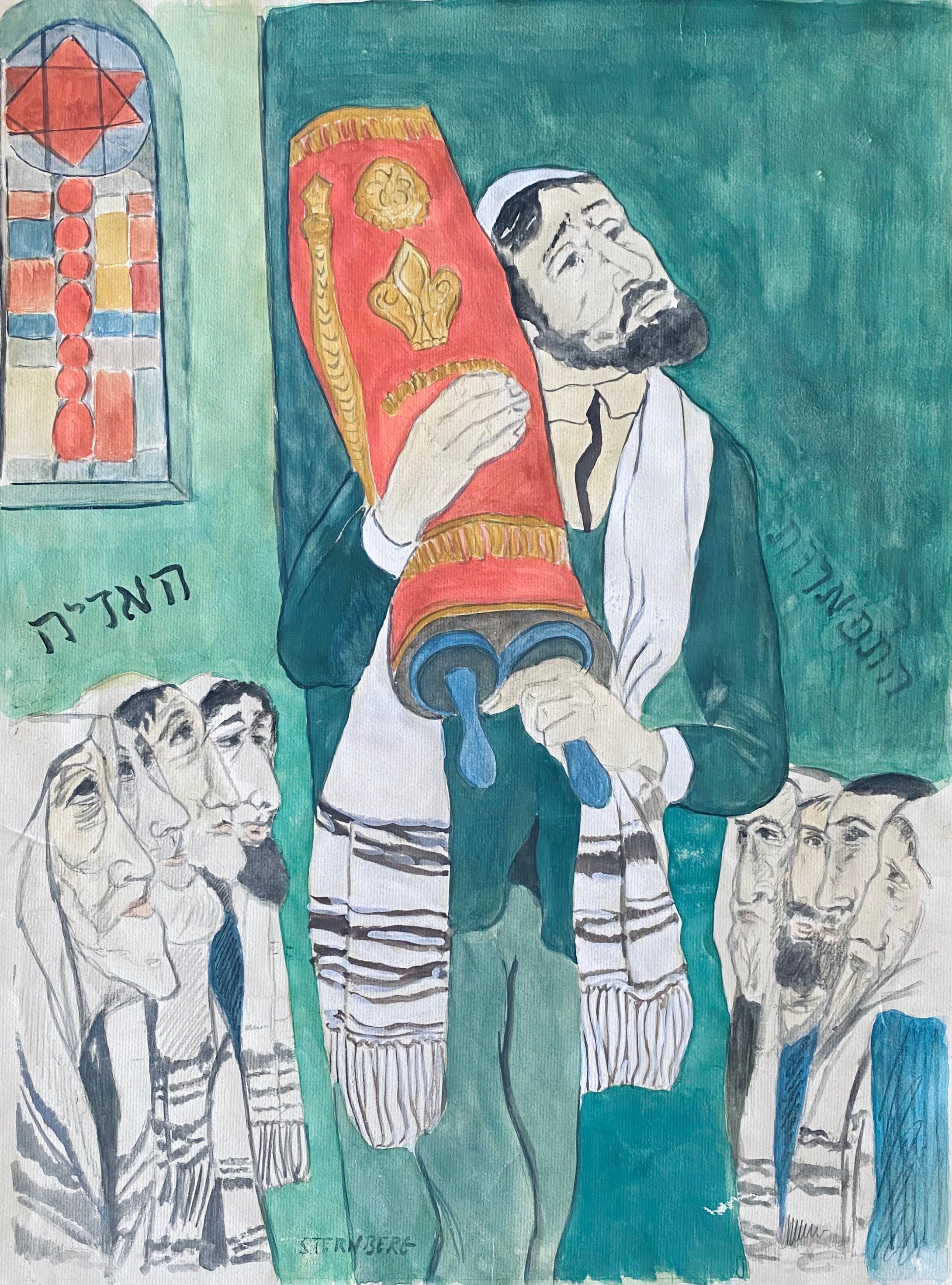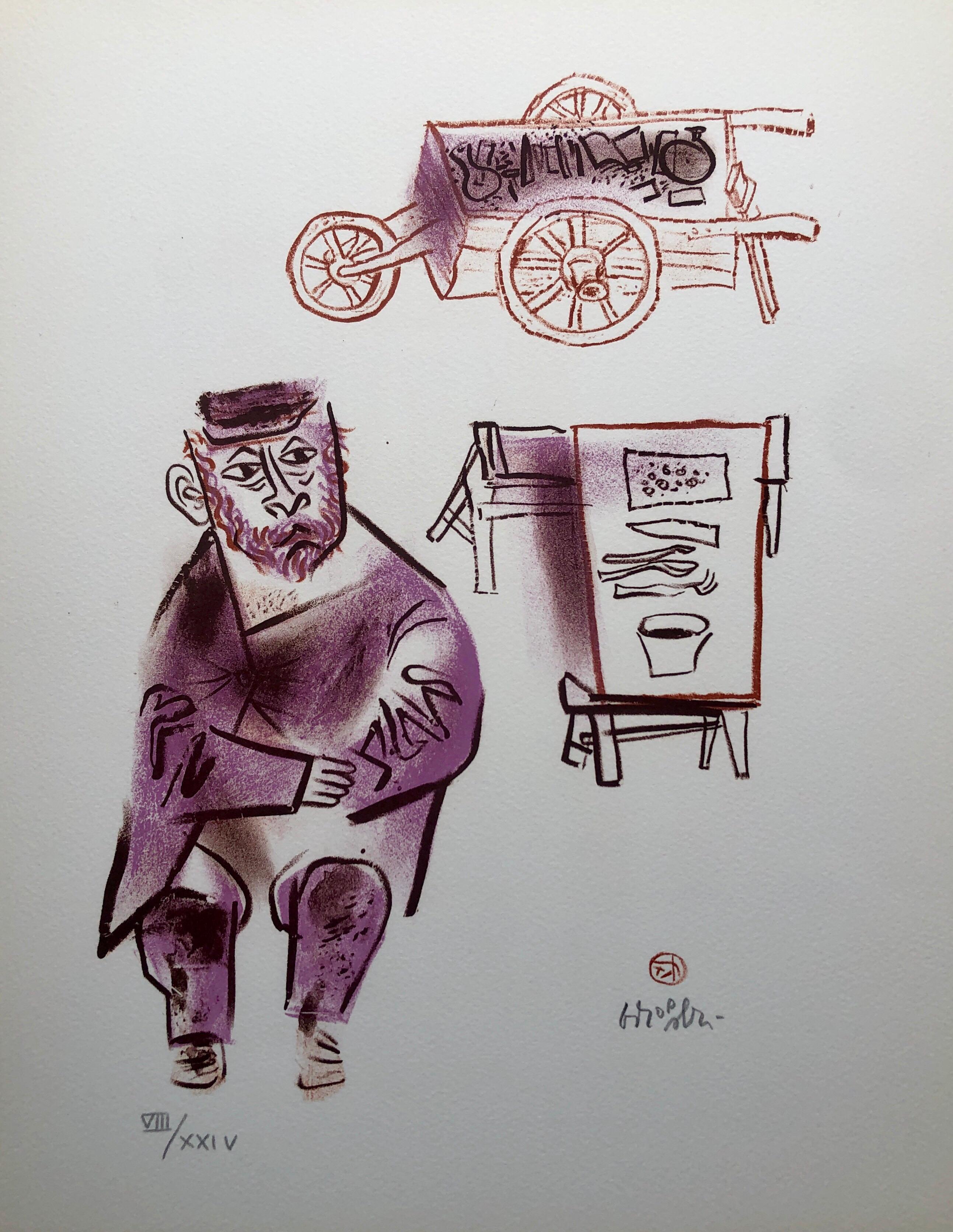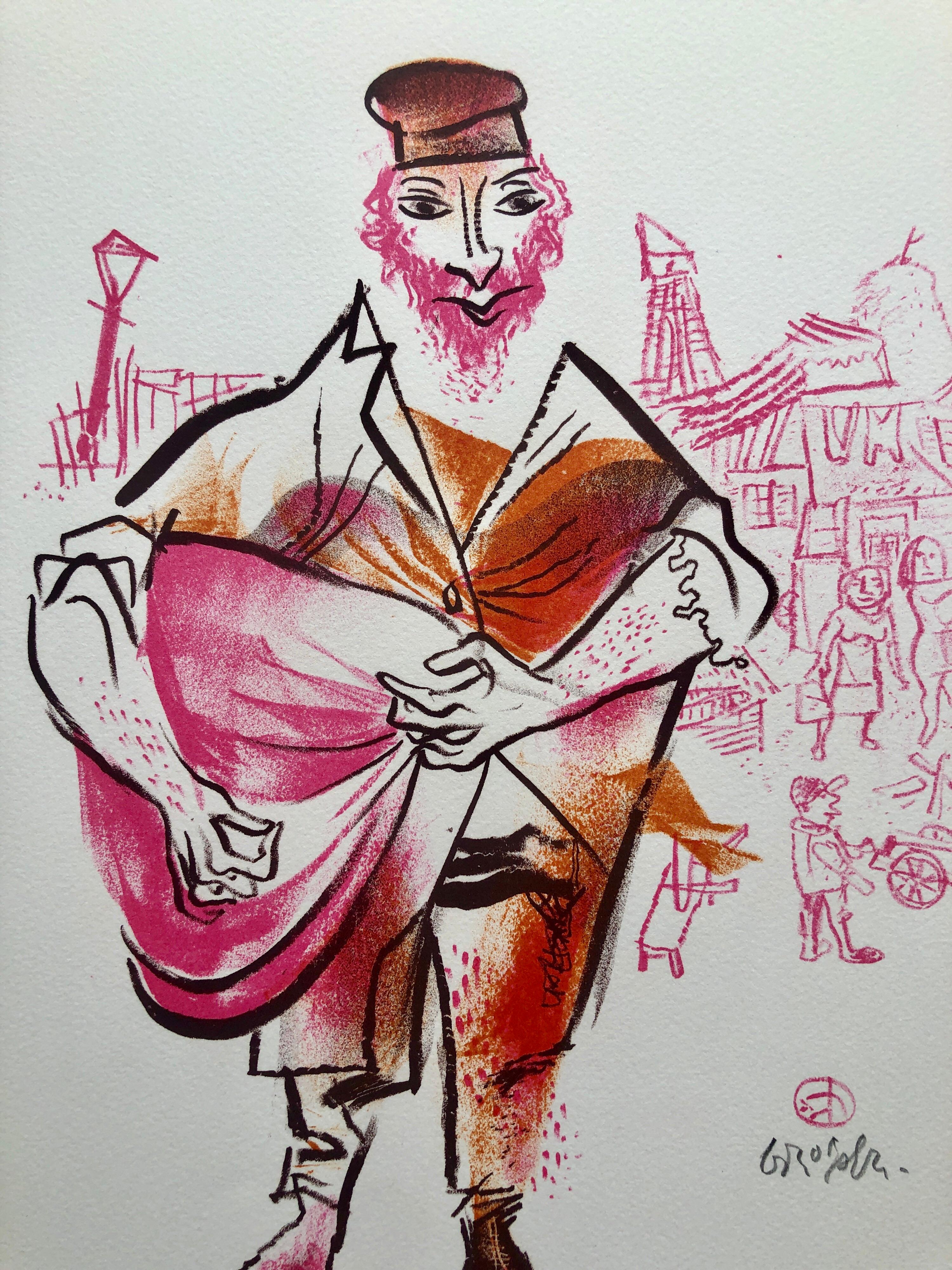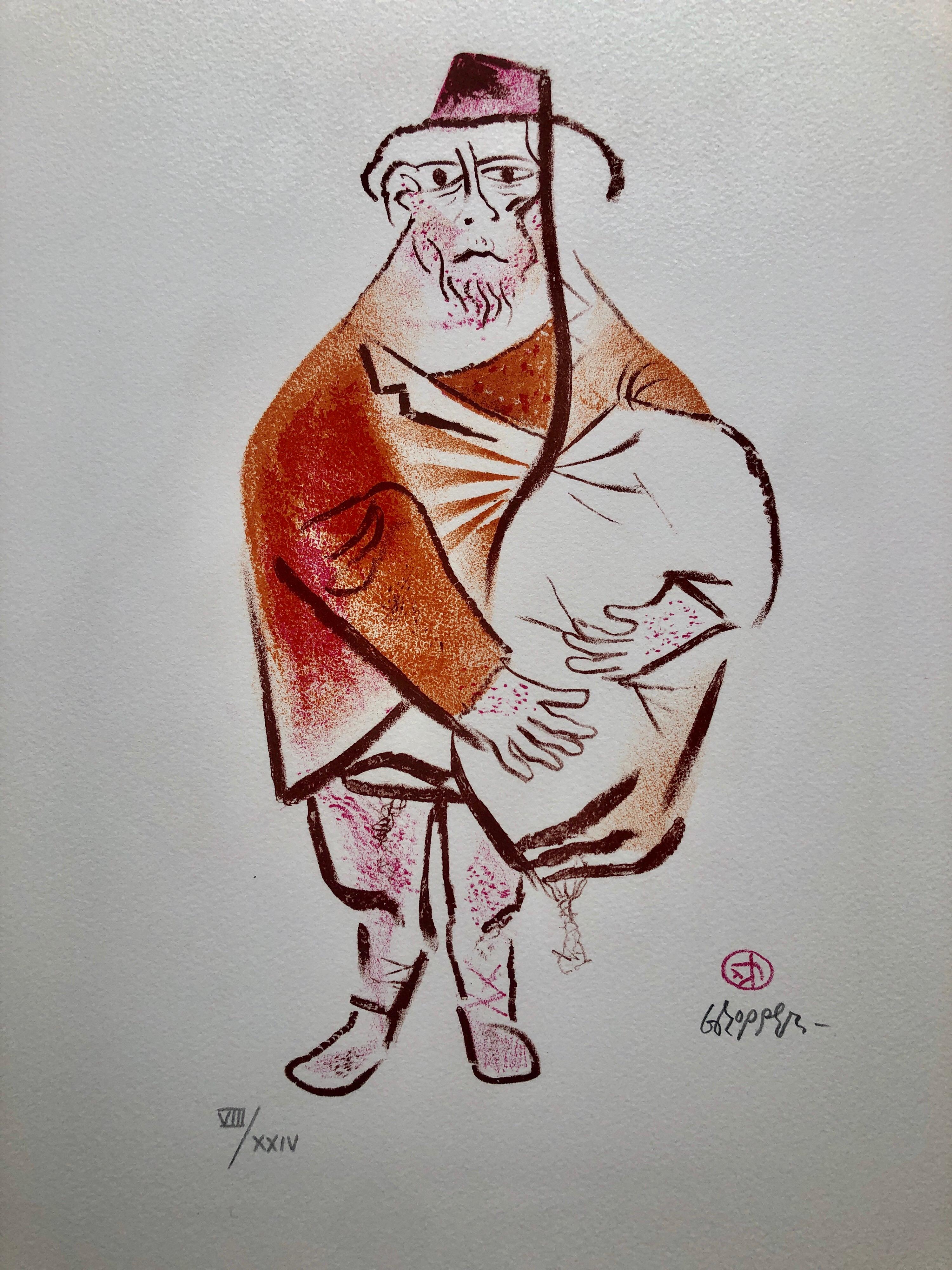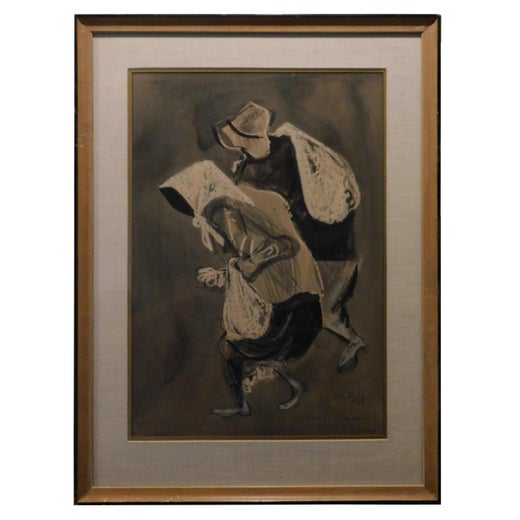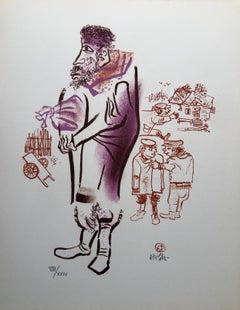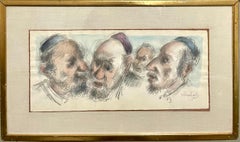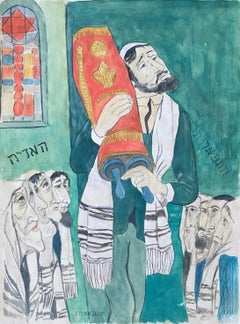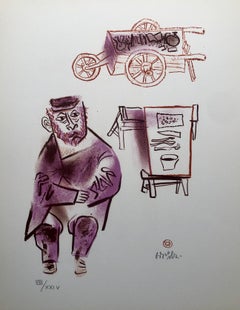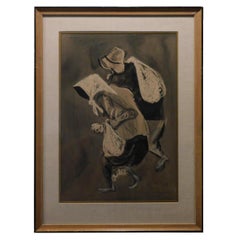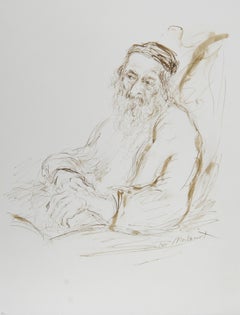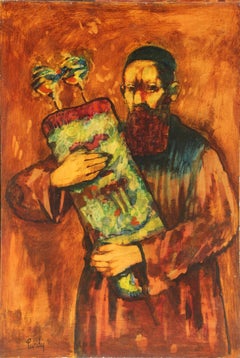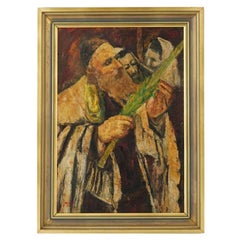William Gropper (1897- 1977)
Rabbinical Student ,
Ink, Gouache and watercolor on paper
Dimensions: frame 21 x 17 in. image 13.5 X 9.5 in.
Hand signed lower right
Provenance: From the estate of Charlotte Thomas, NYC, NY
Old Lower East Side of New York Orthodox Jewish Rabbi, Rare Judaica subject matter for this social realist, WPA artist.
The New-York born artist William Gropper was a painter and cartoonist who, with a caricature style, focused on Americana and social concerns, and was actively engaged in support of the organized labor movement throughout his career. This original watercolor drawing is done in the iconic style of the artist's oeuvre.
Born to Harry and Jenny Gropper in 1897, William was raised in New York City's Lower East Side. His parents were Jewish immigrants from Romania and Ukraine, and young William grew up in relative poverty, watching his family struggle to achieve that sought-after American dream. His father, a bright and college-educated man, was unable to find employment that worthy of his intellect. His mother, meanwhile, worked as a seamstress from home. Coupled with the devastating loss of an aunt to the infamous Triangle Factory fire of 1911, significant childhood factors created the foundation that led to Gropper’s exploration of the American experience.
Early on, Gropper displayed an extraordinary, natural skill for art. By 1912, he was already studying under the instruction of George Bellows and Robert Henri at the Ferrer School in Greenwich Village. During his time at school, Gropper was also awarded a prestigious scholarship to study at the National Academy of Design. However, he refused to fit into convention and was swiftly expelled from the Academy. After his expulsion, Gropper returned home to help financially by assisting his mother and taking a shop position. However, he didn't abandon art academia and soon presented a portfolio to the New York School of Fine Art which earned him a scholarship for study.
Gropper obtained his first significant job as a cartoonist for the New York Tribune in 1917. While working as a staff cartoonist for the Tribune, he also contributed drawings to publications like Vanity Fair, New Masses, The Nation, and Freiheit. His interest in the welfare of the American worker, class inequality, and social injustice was central in his work. After publishing the graphic novel Alley Oop in 1930, Gropper's illustration career extended well into the decade. However, he was never exempt from controversy, and his 1935 Vanity Fair cartoon; prompted anger from the Japanese government. His Americana works were of a more leftist political bent than Norman Rockwell while still very charming and endearing. As an involved labor organizer and Social Realist activist, Gropper continued to bring attention to his radical reputation with visits to the Soviet Union and Poland. However, his concern with European politics and U.S. social causes didn't slow down his artistic career, and by the late 1930s, he had produced significant murals for American cities like Washington D.C. His 1938 mural Construction of a Dam was commissioned for the Department of the Interior and represents the Social-Realism style that depicts experiences of the worker and everyday societal life. Measuring at a staggering 27ft by 87ft, the piece portrays muscular, robust American laborers scaling rocky hillsides, building infrastructure, and operating heavy machinery. The mural feels undeniably American with golden scenery, denim blues, and steely gray colors. Gropper fits perfectly into Social-Realism because the style exhibits an illustrative flair with strong lines and simple, bold hues.
The inspiration for Construction of a Dam sprang from his 1937 travels to the poverty-stricken Dust Bowl area. The trip was sponsored by a Guggenheim Foundation Fellowship, and his drawings of the Grand Coulee and Boulder Dams were featured in The Nation. These drawings eventually led to the creation of the acclaimed mural. Gropper continued to produce more Social-Realist oil paintings and to frequent Europe for inspiration. Fascinated by American Folklore, he channeled that interest into his 1946 painting William Gropper's Americana: It's Folklore. The piece features a U.S. map packed with folklore characters, labor, violence, railroads, mining, and other historical symbols and events. While seemingly uncontroversial by today's standards, the piece caught the attention of the famous Senator Joseph McCarthy who was chairman of the Senate Committee of Government Operations. McCarthy believed the piece was inspired by Communist philosophy, and Gropper was called before the Subcommittee on Investigations in 1953; however, he refused to testify. He was part of a period of American Expressionism that included David Aronson, Milton Avery, Leonard Baskin, Hyman Bloom, Jack Levine, David Burliuk, William Gropper, Ben Shahn, Harry Shoulberg, Harry Sternberg, Max Weber and Karl Zerbe, among others.
Gropper landed exhibitions at London's Piccadilly Gallery and at La Galería del Frente Nacional des Artes in Mexico City. Turning his attention to decorative arts, he produced stained glass windows for Illinois' Temple Har Zion in 1966. Up until his death in 1977, the American master remained active in the Social-Realism style and committed to labor and injustice issues. Today, William Gropper is a highly recognized artist with permanent collections at the Smithsonian Institution, The National Gallery of Art, Princeton University, and the William J. Clinton Presidential Library. There were a number of well known jewish artists included in the WPA FSA New Deal programs including Ben Shahn, William Gropper, Ben Zion, Abraham Rattner and many more.
